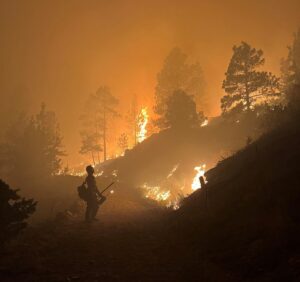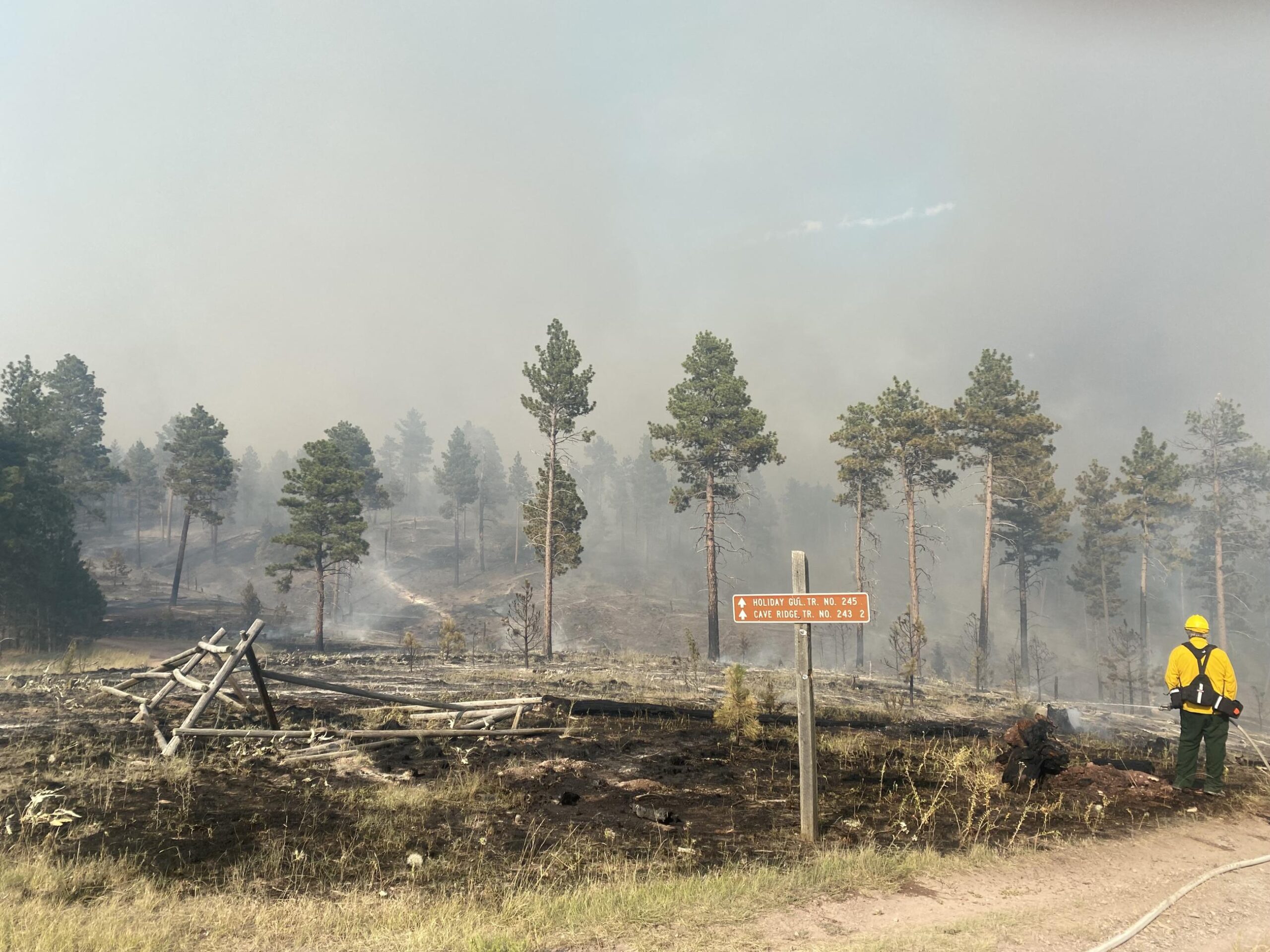A Montana wildfire that is charring forestland just east of Helena, Montana, and led to the death of a firefighter may be able to trace its roots to a courtroom.
Approved in 2021 by the US Forest Service, the Middleman Project planned logging and prescribed burning treatments across 53,131 acres in the Helena-Lewis and Clark National Forest (HLCNF) within the Big Belt Mountain Range. The goals were to enhance wildlife habitat, improve forest health and reduce the possibility of wildfire.
In December 2023, two environmental groups, the Native Ecosystems Council and Alliance for the Wild Rockies, asked a federal judge to stop the project and throw it out. Four months later, in April 2024, the environmentalist groups and HLCNF agreed to a settlement that eliminated nearly all of the planned logging removal and greatly reduced planned prescribed burning. As part of the deal, the Forest Service also paid $39,000 in plaintiff attorney fees.
Two months later, on July 9, the Horse Gulch (see photos) roared to life. Two days later, a 45-year-old pilot fighting the fire from the sky died when her tanker crashed in Hauser Reservoir. One week after that, the fire burned more than 14,000 acres as firefighters work to contain it.
Unfortunately, incidents like the Horse Gulch Fire are not rare. A 2021 article in the Rocky Mountain Elk Foundation’s Bugle magazine told the story of another planned active forest management project scuttled by those same two environmental groups. The Stonewall Vegetation Project aimed to treat unnaturally dense stands, reduce fire hazards and improve wildlife habitat in west-central Montana. Despite a collaborative effort to formulate the plan, the environmental groups waited until it was about to be implemented to go to court. A judge issued a preliminary injunction and barely one month later, lightning sparked the Park Creek Fire. It burned the entire project area, triggered evacuation orders and closed public land. Three years later, a Forest Service budget report showed the litigating environmental groups exploited the Equal Access to Justice Act to receive $100,500 in taxpayer money for attorney fees.
“The really unfortunate thing is when these groups win, the Department of Justice negotiates the fees, but it’s the individual agency that must pay. So, in this case, it would impact the budgets of the U.S. Fish and Wildlife Service, but in other cases it could be the Forest Service, Bureau of Land Management or another federal agency,” said Blake Henning, RMEF chief conservation officer. “All of those agencies are already underfunded, and this just hurts them more, which means they don’t have staff to adequately review issues, which leads to more and more lawsuits. It’s become what amounts to a ridiculous, non-stop merry-go-round ride.”

RMEF is a staunch supporter of active forest management and opposes frivolous litigation that halts work to improve habitat for elk, mule deer, moose and other wildlife species. Its resume includes supplying funding for a number of projects that help slow or stop wildfire spread. Below are just a few of them.
In 2014, the San Juan Fire burned its way through the White Mountains in Arizona, threatening the small town of Vernon, when it ran into a series of forest thinning projects thinning projects sponsored by the RMEF and is partners. The flames slowed in speed and intensity, allowing firefighters to make a successful stand.
In 2016, the Cold Fire tore through the Black Hills National Forest in the western part of South Dakota. Rancher Phil Lampert thought it may destroy his home. Instead, flames dropped in length because the fire hit a 2014 RMEF prescribed burn project.
In early July 2024, firefighters stopped a wildfire that broke out on public land near La Pine, Oregon, because of a series of treatments over several decades. RMEF, too, supplied funding for past habitat enhancement work in that same area.
(Photo credit: Inciweb)
